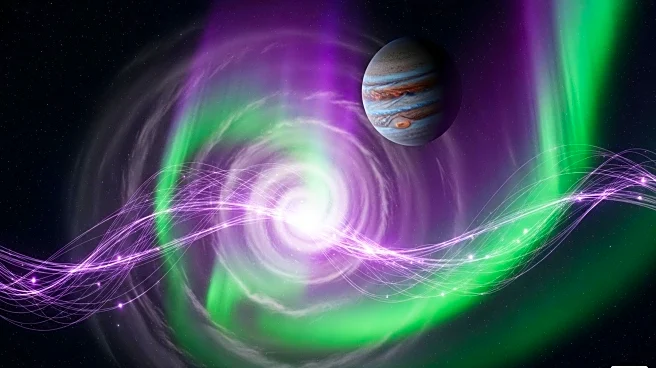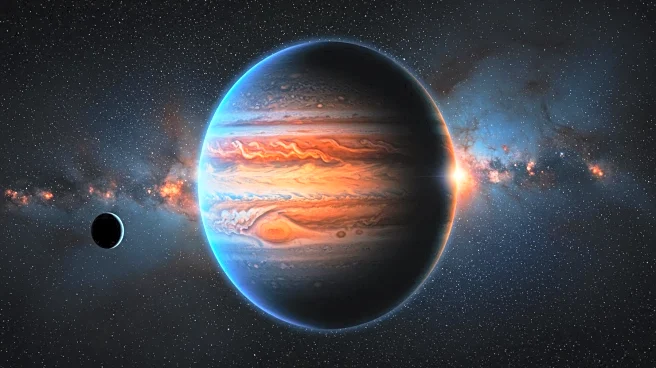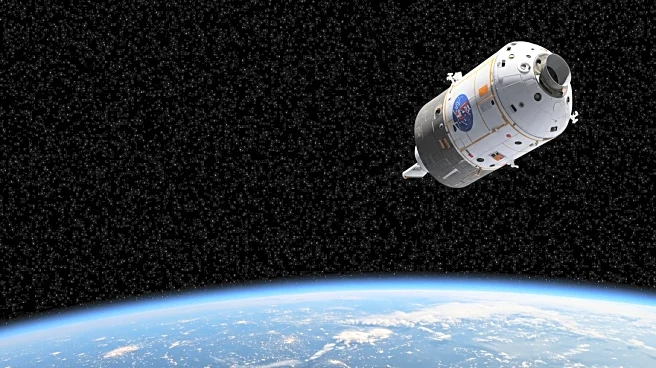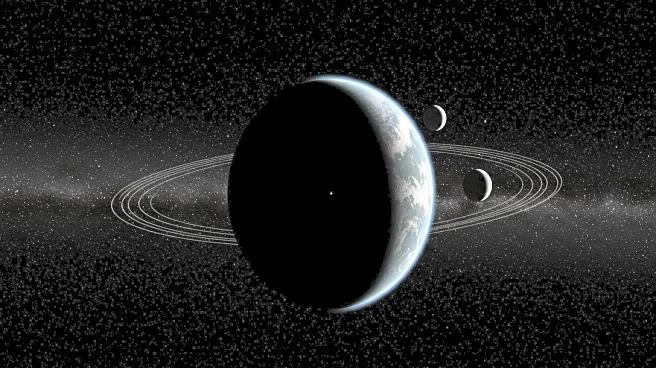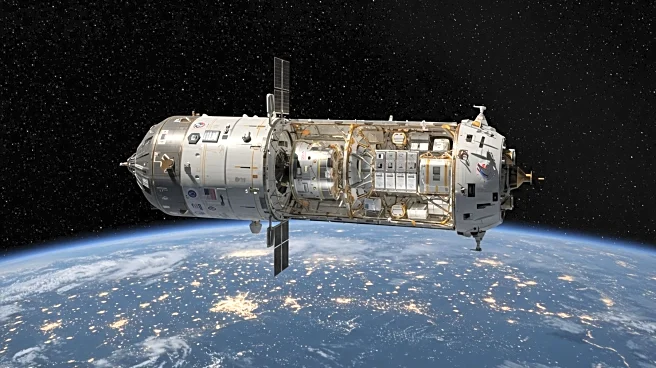What's Happening?
Researchers at the University of Minnesota Twin Cities have identified a new type of plasma wave in Jupiter's aurora. This discovery was made possible through data collected by NASA's Juno spacecraft, which is in a polar orbit around Jupiter. The plasma wave, characterized by its very low frequency, is attributed to the low-density polar plasma and the strong magnetic field of Jupiter. This research, published in Physical Review Letters, enhances understanding of auroral phenomena on other planets, which can provide insights into Earth's magnetic field and its protective role against solar radiation.
Why It's Important?
The discovery of a new plasma wave in Jupiter's aurora is significant for several reasons. It expands scientific knowledge of planetary magnetospheres and auroral processes, which are crucial for understanding how planets interact with solar winds and radiation. This research could have implications for space exploration and the study of planetary atmospheres, potentially influencing future missions to Jupiter and other magnetized planets. Additionally, understanding these processes on Jupiter can offer insights into similar phenomena on Earth, aiding in the development of technologies to protect against solar radiation.
What's Next?
As Juno continues its mission, researchers anticipate gathering more data to further investigate this new plasma wave phenomenon. The ongoing analysis may reveal additional insights into Jupiter's complex magnetic field and its effects on auroral activity. Future studies could explore the implications of these findings for other magnetized planets, potentially leading to new discoveries in planetary science and space exploration.
Beyond the Headlines
This discovery highlights the intricate dynamics of plasma and magnetic fields in planetary environments. It underscores the importance of interdisciplinary research in advancing our understanding of space phenomena. The study also raises questions about the potential for similar discoveries on other planets, which could reshape scientific perspectives on planetary magnetospheres and their interactions with solar radiation.
